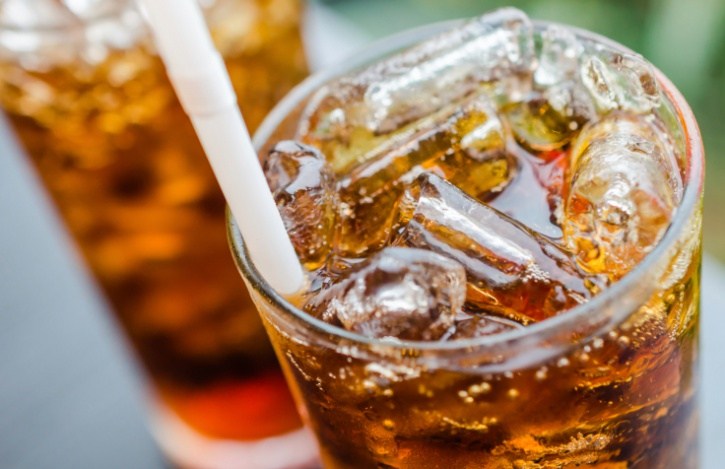Time to fatten up our diets
Saturated and trans fat? No. But replacing carbohydrates with unsaturated fat could lead to a longer, healthier life.
Fat of any kind packs in the calories. A single gram contains nine, compared with four in a gram of carbohydrate. So, yes, fat can be fattening if you eat too much of it. Of course, the same is true of carbohydrate. Extra calories that lead to extra weight, no matter where they come from, aren't healthy.
Say, though, your calorie level is about right — you're consuming as many as you burn up. Where is the best place to get them? For years, the official dietary advice has steered Americans away from fats and thus toward carbohydrates. Important studies in the 1950s showed that countries where people ate a lot of saturated fat — the sort of fat in meat and dairy products — were more likely to have higher heart disease rates. Because saturated fat got a bad name, all fat did, even though there was research even at that time that showed other types of fat probably had a different effect.
But the connection between overall fat intake and bad health outcomes is looking pretty tenuous. Neither of the two large epidemiological studies based at Harvard, the Nurses' Health Study and the Health Professionals Follow-up Study, has found a link between the overall percentage of calories from fat in a diet and three of our biggest health woes: cancer, heart disease, and weight gain. The verdict has been the same from plenty of other large studies.
Good vs. bad...
If we open the door to more fat in our diets, then which type of fat do we let in? The studies comparing countries done in the 1950s weren't wrong about saturated fat being bad for the heart. Replace carbohydrates with saturated fat, and your "bad" LDL cholesterol levels will go up. So will your "good" HDL levels, although not enough to cancel out the LDL increase.
Swap out those same carbohydrates with unsaturated fat found primarily in vegetable oils, and you get the best of both cholesterol worlds: a decrease in LDL and an increase in HDL. Harvard researchers have estimated that if we were to replace a small amount of the carbohydrates we eat (the equivalent of 5% of our total calorie intake) with polyunsaturated fat, we'd lower our risk of developing heart disease by 30% to 40%.
But, as usual, it's not quite so simple. Most of the saturated fat in our diets comes in one of four varieties: lauric acid, myristic acid, palmitic acid, or stearic acid. Their effect on LDL cholesterol varies, so among the saturated fats, there are degrees of bad. Stearic acid seems to be the least bad because it's rather quickly converted into a healthful monounsaturated fat and doesn't increase LDL levels very much, if at all. That's good news for steak lovers: Half of the saturated fat in beef is stearic acid. Chocolate, already enjoying health accolades because of its blood pressure–lowering effects, looks even better when you consider that a third of the fat in cocoa butter is stearic acid.
...and the really bad stuff
Some trans fat occurs naturally in meat and dairy foods but most is artificial. Trans fat is produced by partially hydrogenating — that is, adding hydrogen atoms to — vegetable oils (see sidebar below). Starting in the early 1990s, the tide began to turn against trans fat. Experiments showed that trans fat raised LDL levels like saturated fat and lowered HDL. It's now seen as the really bad fat. Beyond its effect on cholesterol, trans fat seems to make platelets "stickier" (making blood clots more likely), stir up inflammation, and promote the production of extra-small LDL particles that are especially damaging to arteries. Studies have linked high intake of trans fat to diabetes, dementia, gallstones, heart disease, and infertility.
Fats 101: Size and shape matter
All molecules consist of a group of atoms attached to one another by electrical bonds. Organic molecules, including fats, contain carbon atoms, often strung together in a chain.
Almost all the fat in our diets comes in the form of triglyceride — three (thus the tri) fatty acids tethered at their acidic ends to a stubby, three-carbon-atom molecule called glycerol. Although triglyceride is the precise term, even nutrition experts tend to favor the simpler term fat.
Glycerol anchors the fatty acids, but it's the length and shape of the fatty acids that determine how a fat molecule behaves in the store, in the kitchen, and in our bodies. Fatty acids are stringy-looking things made up of chains of carbon atoms with hydrogen atoms hanging off the side. Their lengths are a function of the number of carbon atoms in the chain.
The shape of a fatty acid is influenced by the chemical bonds in the carbon conga line and how much "room" there is for the hydrogen atoms to join in. A saturated fat is filled to capacity (think satiated) with hydrogen. For that to happen, the carbon atoms must be lined up more or less in a straight line with single bonds between them.
A fat is unsaturated when some of the carbon atoms in the chain are double, rather than just single, bonded. Naturally occurring "cis" double bonds have two effects. First, they alter the composition of fat, because there's less "space" for a hydrogen atom on a carbon atom that shares two bonds with its carbon neighbor instead of one. Second, and perhaps more importantly, the double bond changes the fat molecule's shape by putting a kink in the carbon chain.
The bad...
...and the good fats
A monounsaturated fat has one pair of double-bonded carbon atoms and therefore one sharp kink.
Polyunsaturated fats have two or more pairs of double-bonded carbon atoms and multiple kinks that make them curl.
Where the double bonds occur in the carbon chain is also significant. The famously healthful omega-3 fats in fish and a few other foods are polyunsaturated fats with a double bond on the third carbon from the end ("omega" is Greek for end).
Trans fat is created by pressure-cooking unsaturated fat — often soybean oil — with hydrogen gas. The process adds some hydrogen to the unsaturated fat, which is why you'll see partially hydrogenated oil listed among the ingredients. It also twists the remaining double bonds between the carbon atoms in an unnatural way so they end up straighter. As a result, trans fat ends up being shaped more like a saturated fat than the crooked unsaturated fat from whence it came.
The relative amounts of saturated and unsaturated fat confer some important properties on the fats and oils we eat. The higher the saturated fat content, the more solid a fat will be at room temperature because those straight-line carbon chains pack together so nicely.
Saturated fat also keeps longer than either monounsaturated or polyunsaturated fat. The double bonds in the unsaturated fats leave them vulnerable to reactive molecules, like oxygen, that break up the carbon chains and turn the fat rancid.
Trans fat helps a product stay solid because, like a saturated fat, its carbon chains are nice and straight. It's also very stable. For those reasons (and price) it has been used in baked goods (which stay fresh longer), stick margarine, and deep frying.
In 2006 the FDA started requiring food manufacturers to include trans fat in nutrition labeling. Because of the label requirement — and bans like those in New York City and elsewhere — many food manufacturers and restaurants have stopped using trans fat. A wide variety of fats and oils are being tested and used in its place. Here are a few of them:
Palm oil blends. Palm oil's saturated fat content (50%) makes it useful for baking, but there's some worry that the saturated fat intake could cause heart problems. Palm kernel oil, which comes from a different part of the plant, has even more saturated fat (81%), although not all of its saturated fat increases LDL levels. Environmental groups like Greenpeace say palm tree plantations are leading to destruction of rainforest in places like Indonesia.
Fully hydrogenated oil. Oleic acid, a monounsaturated fat, and linoleic acid, a polyunsaturated fat, can be fully hydrogenated to produce, in effect, an artificial version of stearic acid. Stearic acid has a minor effect on cholesterol levels, but this artificial version in large amounts may have inflammatory effects.
Interesterified fat. Interesterification is a process that creates a hybrid molecule that is part polyunsaturated, part saturated. Interesterified palm oil has been used to make margarine, and industry-sponsored trials haven't shown any damaging effects on cholesterol levels. Still, some experts are leery, citing studies suggesting that interesterification might have some of the same bad effects as partial hydrogenation, although no trans fats are produced.
Specific types of fat in common oils and fats*
All of the oils and fat we eat are, in fact, mixtures of several types of fat (values expressed as percent of total fat).
Saturated
Trans
Monounsaturated
Polyunsaturated
Canola
7%
0%
58%
29%
Coconut
87
0
6
2
Olive
13
0
72
8
Palm
50
0
37
10
Safflower
9
0
12
74
Soybean
16
0
44
37
Sunflower
10
0
20
66
Beef fat
39
8
49
3
Butter
64
3
29
6
Chicken fat
27
0
41
31
Lard (Pork fat)
39
1
44
11
*Data are from analyses performed at Harvard School of Public Health Lipid Laboratory and USDA publications.
Six tidbits of fat wisdom
Dr. Walter Willett, chair of the Harvard School of Public Health's nutrition department, has been a leading proponent of a more fat-friendly approach to eating. His research also helped expose the harm caused by trans fat. Here are six tips and insights from Dr. Willett:
-
Nutrition guidelines used to recommend that we get no more than 30% of our calories from fat. The federal government's latest guidelines say up to 35% is okay. Dr. Willett would even go as far as 40%.
-
Limit your saturated fat intake to less than 8% of your total calories, which for most people comes out to about 17 grams of saturated fat a day. That may not be what you are used to, but it still leaves room for a seven-ounce cheeseburger (12 grams of saturated fat) or ice cream (a scoop of the full-fat variety has 10 grams of saturated fat).
-
Health effects of monounsaturated and polyunsaturated fat seem to be about the same. If anything, polyunsaturated might be a bit more healthful because of its effects on blood clotting and heart arrhythmias.
-
Although it seems to be on its way out, you still have to be on the lookout for trans fat. Dr. Willett calls it "metabolic poison." The FDA is allowing food manufacturers to label their products as having no trans fat if there is less than 0.5 grams per serving. Check the ingredient list. If partially hydrogenated oil is on it, then there is still some trans fat in there, despite what the nutrition label says.
-
The tropical oils in small amounts are okay, and they're certainly an improvement over trans fat. Americans were scared away from them because of their saturated fat content. But remarkably, coconut oil and olive oil have similar effects on the ratio of LDL to HDL.
-
When it comes to chicken, go ahead and leave the skin on. Because of the polyunsaturated fat content, says Dr. Willett, "a little bit of chicken fat isn't such a bad thing." Besides, he says, "cooking chicken with the skin on makes it taste a lot better."
-
How To Boost Your Metabolism And Shed Fat
There are too many things to do with you
-
Understand Fat Burning Food
Do fat burning foods really exist? The answer is yes. When fat burning
-
Lose Weight Immediately
You CAN learn how to Lose Weight from the comfort of your home.Eve
-
Fat reduction For Anyone And Not Just simply Famous People
Distinct from ages ago when curvy shape are already usually the major
-
The Combined Benefits Of Diet And Exercise
Diet and exercise go hand-in-hand when youre trying to lose weight. (
-
How Personal Trainers and Coaches Can Help Clients Lose Weight for Good -- Guaranteed!
How Personal Trainers and Coaches Can Help Clients Lose Weight for
- DON'T MISS
- Best Diets To Get In Shape
- How Staying Fit Is Important
- Phen 375 Phentermine Subsitute
- Guidelines For Perfect Weight Loss By Dancing
- Celebrity Diet Secrets
- Weight Loss: How To Factor In Food Labels
- 12 Healthy Snacking Tips for Weight Loss
- Lose Stomach Weight: Myths and Facts Revealed
- Magazine Shows How to Beat Belly Fat
- Facts About Hoodia Cactus




